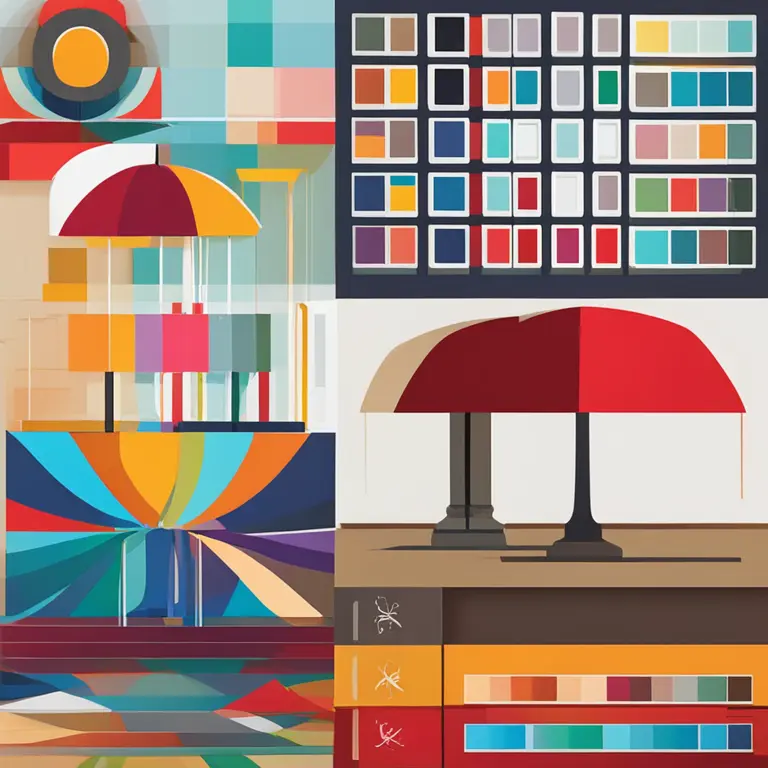
Harmonizing Mind Through Meditative Drawing
Discover how meditative drawing techniques can harmonize your mind and foster relaxation, enhancing mindfulness and creativity.
article by Hina Kurosawa
The Essence of Meditative Drawing
Meditative drawing merges the calming benefits of meditation with the creative process of drawing to form a tranquil and therapeutic art activity. It doesn't require any artistic background, only the intention to engage mindfully with the drawing process. This technique emphasizes the flow of movement and the sensory experience of the art materials you choose. As you draw, your mind concentrates on shapes and lines, which can lead to a more relaxed state, likened to the calmness one achieves during deep meditation. It's a simple, yet profound way to clear your thoughts and enhance focus.

Starting Your Meditative Drawing Journey
To embark on this journey, you'll need to create a serene environment. Choose a quiet space and maybe add soft instrumental music or nature sounds if it helps you relax. Gather simple materials such as paper, pens, or pencils. Begin with a few deep breaths to center yourself. Then, allow your hand to move freely, not worrying about the outcome. The key is to release expectations and judgment, letting your intuition guide your hand. This practice can serve as a warm-up for more focused meditation or as a standalone mindfulness exercise.

Choosing Your Drawing Focus
Selecting a focus for your drawing can be based on personal preference or emotional need. Some choose patterns like mandalas, known for their repetitive and soothing nature. Others might lean towards free-form shapes or lines that organically evolve. Whatever the subject, keep your movements repetitive and rhythmic. Pay attention to the sensations of the pen on paper and the sounds it makes, integrating sensory experience into your meditation. This approach is especially powerful in anchoring you in the present moment.

Incorporating Colors Mindfully
Colors can significantly affect your emotional and psychological state. When meditative drawing, consider using colors intuitively to express emotions or to invoke certain feelings. You might pick calm blues and greens to evoke serenity or vibrant reds and oranges to energize you. Don't overthink your choices; let your emotional response to the colors guide you. This practice not only enhances your meditative state but can also lead to personal insights based on the colors you gravitate towards.

Maintaining Flow and Focus
An integral part of meditative drawing is maintaining a flow state, where time seems to disappear, and you are entirely absorbed in the activity. To achieve this, focus on your breathing and the physical act of drawing. Whenever your mind wanders, gently bring your awareness back to the creation process. With practice, you will be able to reach this state more quickly, finding both relaxation and joy in your drawing mindfulness exercises.
Reflecting on Your Work
After each session, spend some time reflecting on your artwork and the experience. Contemplate any emotions that surfaced or thoughts that emerged. Meditative drawing can sometimes be a pathway to self-discovery, creating a visual journal of your inner experiences. This reflection can deepen your understanding of yourself and your emotional landscape, contributing to a more profound meditative practice.
Published: 2/12/2024
Modified: 2/12/2024
More predictions
Come back here soon to learn more about yourself and your future


The Spectrum of Meditation Practices
Delve into the diverse world of meditation techniques to enhance mindfulness, focus, and tranquility in your daily life.


Diverse Meditation Techniques for Modern Practitioners
Discover a range of meditation methods suited for contemporary lifestyles, offering pathways to inner peace and clarity.


Variety of Meditation Practices for Inner Peace
Discover a curated list of meditation techniques to cultivate mindfulness and tranquility in your daily life.